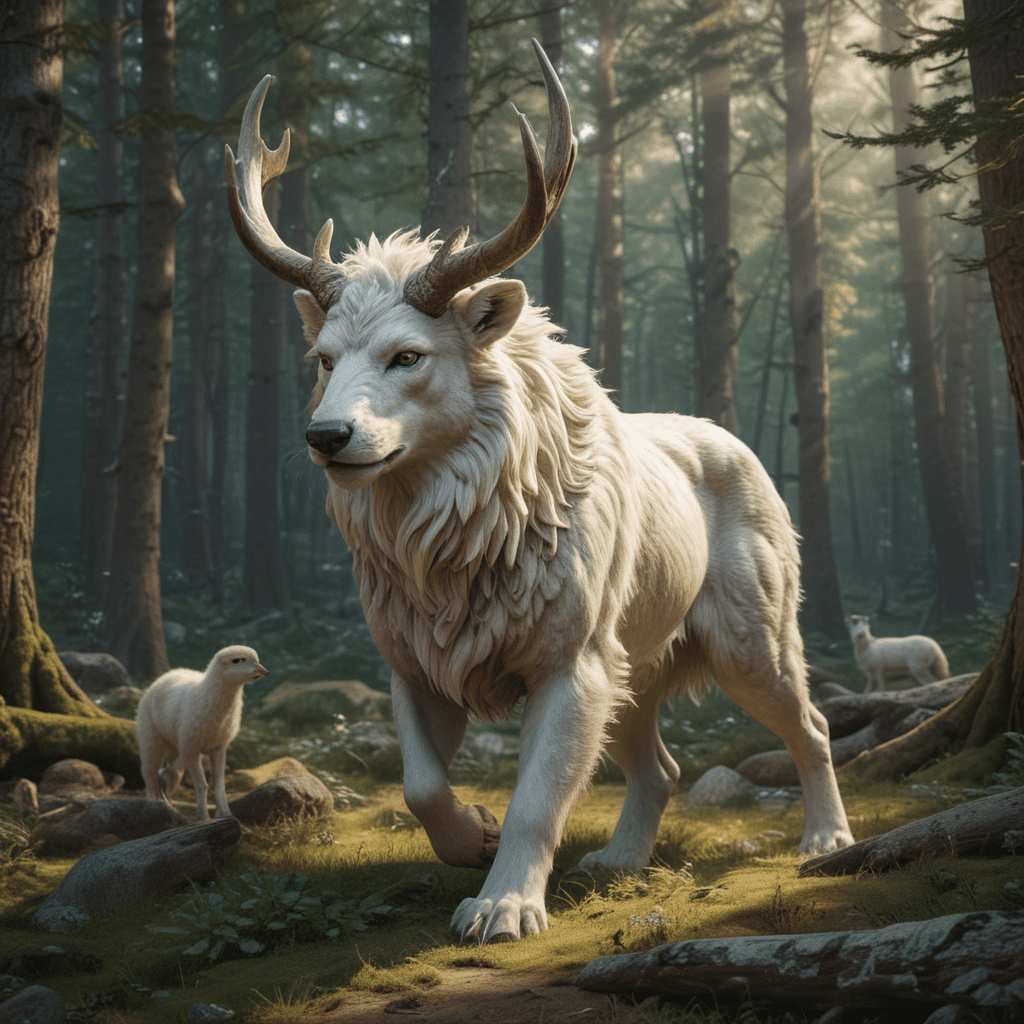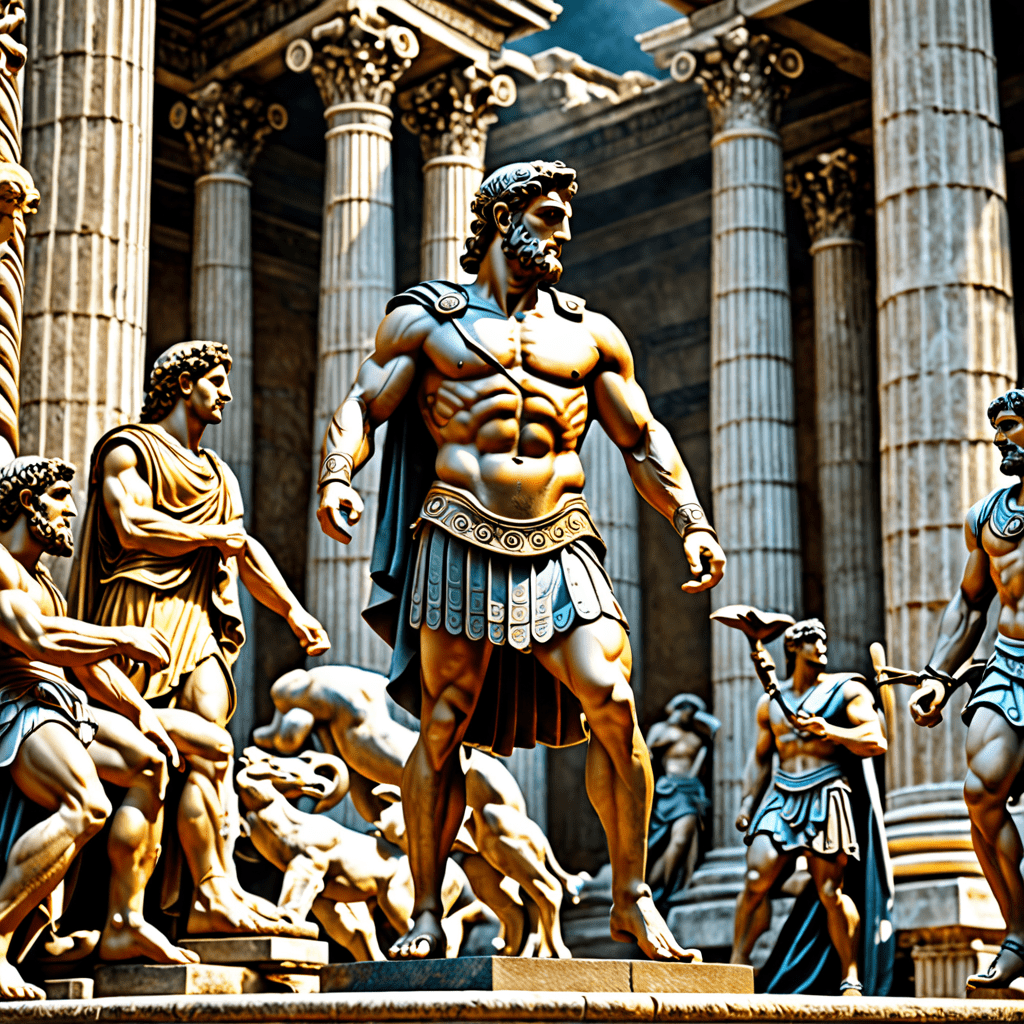The Symbolism of Animals in Finnish Mythology
I. Introduction
Finnish mythology is a fascinating tapestry woven with mythical creatures and animal symbolism that provide profound insights into the beliefs, values, and worldview of the ancient Finns. Each animal carries unique attributes and associations, from the enigmatic bear to the soaring eagle, contributing to the rich narrative of this captivating mythology.
II. The Bear: Strength, Courage, and the Guardian
The bear, revered as the king of the forest, holds a prominent place in Finnish mythology. Symbolizing strength, courage, and wisdom, the bear was seen as a guardian and protector of the forest and its inhabitants. Its presence in dreams and stories often signified good fortune, protection, and divine favor.
III. The Elk: Fertility, Nobility, and the Ancestors
The majestic elk, with its towering antlers, represents fertility, nobility, and the connection to the ancestors. It was believed that the elk carried the souls of the departed into the afterlife, its stately presence bringing blessings and protection. Stories abound of shamans shapeshifting into elks, gaining the animal's speed and power.
IV. The Swan: Wisdom, Prophecy, and the Underworld
The elegant swan, associated with wisdom and prophecy, was a sacred bird in Finnish mythology. It was believed that the swan's songs held the power to heal and that its feathers could grant wishes. Swans were also the guardians of the underworld, guiding the souls of the deceased to their final resting place.
V. The Eagle: Power, Dominion, and the Sky
The mighty eagle, soaring above the clouds, symbolizes power, dominion, and the connection to the heavens. In Finnish mythology, the eagle was the messenger of the gods and its presence often marked important events or divine intervention. Its sharp eyes and keen vision represented the ability to discern the truth and wisdom.
VI. The Pike: Trickery, Adaptability, and the Waters
The pike, with its lightning-fast strikes and elusive nature, symbolizes trickery, adaptability, and the power of the waters. In Finnish mythology, the pike was believed to be a cunning creature, outsmarting its enemies with its deceptive tactics. Its presence in lakes and rivers represented the hidden dangers lurking beneath the surface and the need for caution.
VII. The Wolf: Cunning, Shadow, and the Wild
The wolf, a creature of the forests and shadows, holds a dualistic nature in Finnish mythology. It represents both cunning and ferocity, as well as the untamed wilderness. Wolves were seen as protectors of the forest, guiding lost travelers and punishing those who disrespected nature. However, they could also be dangerous predators, symbolizing the darkness and danger that lurks within the untamed wild.
VIII. The Fox: Intelligence, Deception, and the Forest
The fox, with its quick wit and sly nature, symbolizes intelligence, deception, and the forest. In Finnish mythology, the fox was often depicted as a trickster, outsmarting its opponents with its cunning tactics. It represented the dangers of the forest, as well as the need for resourcefulness and adaptability. However, it was also seen as a protector of the forest, keeping balance and preventing chaos from spreading.
IX. The Raven: Death, Prophecy, and the Underworld
The raven, a bird of ill omen, symbolizes death, prophecy, and the underworld in Finnish mythology. It was believed that the raven's presence foretold misfortune or death, and its cries were often seen as warnings from the dead. Ravens were associated with the underworld, guiding the souls of the deceased to their final resting place. Their dark plumage and piercing eyes represented the mysteries and secrets hidden within the realm of the dead.
X. Conclusion
The symbolism of animals in Finnish mythology offers a glimpse into the beliefs, values, and worldview of the ancient Finns. Each animal, from the powerful bear to the elusive pike, represents unique attributes and qualities, contributing to the rich tapestry of Finnish mythology. These animals serve as guardians, protectors, tricksters, and messengers, embodying the interconnectedness of the natural world and the human experience. Understanding their symbolism provides a deeper appreciation for the cultural heritage and enduring legacy of Finnish mythology.
FAQs
Q: Why were animals so important in Finnish mythology?
A: Animals were central to Finnish mythology because they represented the powers of nature, the untamed wilderness, and the interconnectedness of all living things. They served as guides, protectors, and symbols of different aspects of human existence.
Q: Which animals were considered sacred in Finnish mythology?
A: The bear, elk, swan, and eagle were among the most sacred animals in Finnish mythology, each representing specific virtues and powers. They were revered and respected for their strength, wisdom, nobility, and connection to the divine.
Q: How did animals influence the lives of ancient Finns?
A: Animals played a vital role in the daily lives of ancient Finns. They provided food, clothing, and protection, and their behavior was often seen as a reflection of the natural world and the gods. Animals also served as inspiration for art, storytelling, and religious practices.



